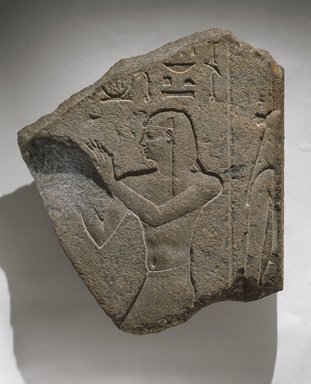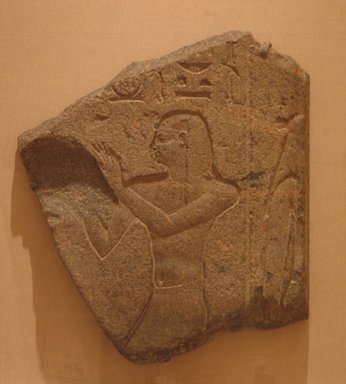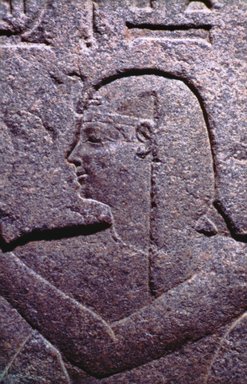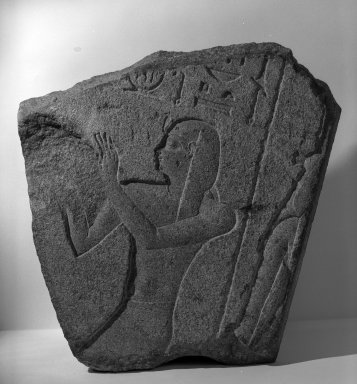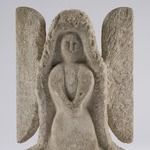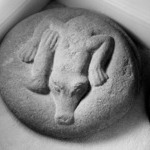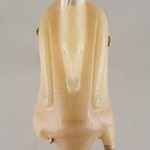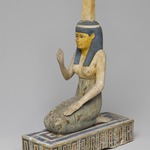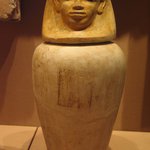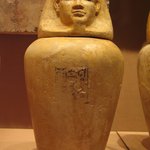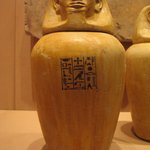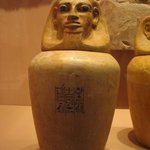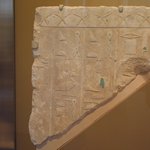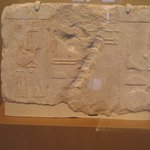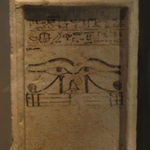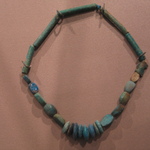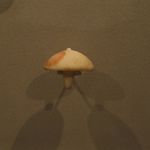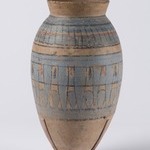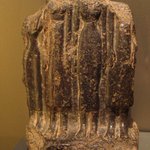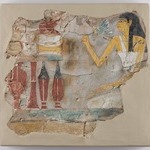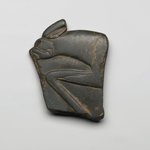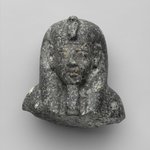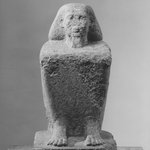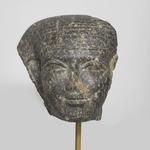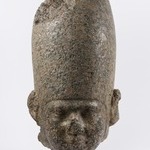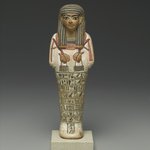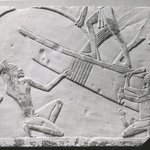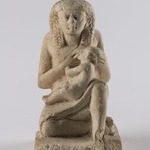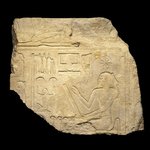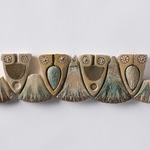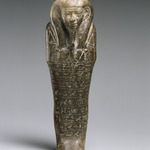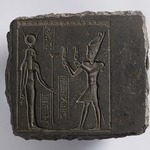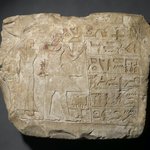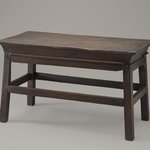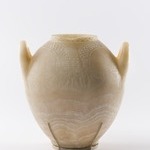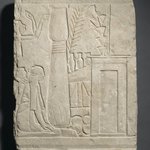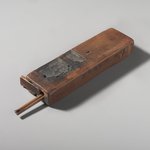Relief of Ptolemy II Philadelphos
Egyptian, Classical, Ancient Near Eastern Art
Although the Ptolemaic Period ushered in a long period of foreign rule, the Macedonian kings of that dynasty did not interfere with the Egyptian artistic traditions of the preceding three milennia. Ptolemy II Philadelphos, like his father Ptolemy I Soter, the founder of the dynasty, continued the practice of building and decorating temples in traditional Egyptian fashion.
While this is not to say that the Macedonian rulers did not have Greek artists portray them according to Greek artistic conventions, here the Greek ruler is shown in a purely Egyptian guise, wearing the traditional nemes-headdress of the pharaoh. The style of the relief, including the deeply cut navel, the horizontal treatment of the torso muscles, the "golf ball" chin, and the upturned smile, is common in representations from Dynasties XXIX and XXX (circa 399–342 B.C.) and was readily adopted by the
Ptolemies into their iconographic program. Visible behind the king is the figure of a goddess in another
scene.
MEDIUM
Granite
DATES
285 or 282–246 B.C.E.
PERIOD
Ptolemaic Period
DIMENSIONS
27 × 23 1/2 × 2 5/8 in. (68.6 × 59.7 × 6.7 cm)
(show scale)
ACCESSION NUMBER
72.127
CREDIT LINE
Charles Edwin Wilbour Fund
CATALOGUE DESCRIPTION
Granite sunk relief representation of Ptolemy II facing left, wearing nemes with uraeus and short kilt, line at neck suggests necklace or shirt. His arms are raised, bent at elbows with existing near hand open, away from body. Above him the bottoms of two columns of inscription. Behind him and separated by a sunk vertical line is a goddess wearing a vulture headdress surmounted by tall plumes, facing right.
Condition: Excellent, relief carving very crisp. Broken away at bottom diagonally below king's buttocks and goddess' pelvis. Back of head, near arm and small portion of female's body existing. Large portion gone where the far hand of the king would be. Upper edge broken at a diagonal and cuts through inscription leaving bottom of a cartouche and portion of another column of inscription. Small chips over surface.
MUSEUM LOCATION
This item is not on view
CAPTION
Relief of Ptolemy II Philadelphos, 285 or 282–246 B.C.E. Granite, 27 × 23 1/2 × 2 5/8 in. (68.6 × 59.7 × 6.7 cm). Brooklyn Museum, Charles Edwin Wilbour Fund, 72.127. Creative Commons-BY (Photo: Brooklyn Museum, 72.127_SL1.jpg)
IMAGE
overall, 72.127_SL1.jpg. Brooklyn Museum photograph
"CUR" at the beginning of an image file name means that the image was created by a curatorial staff member. These study images may be digital point-and-shoot photographs, when we don\'t yet have high-quality studio photography, or they may be scans of older negatives, slides, or photographic prints, providing historical documentation of the object.
RIGHTS STATEMENT
Creative Commons-BY
You may download and use Brooklyn Museum images of this three-dimensional work in accordance with a
Creative Commons license. Fair use, as understood under the United States Copyright Act, may also apply.
Please include caption information from this page and credit the Brooklyn Museum. If you need a high resolution file, please fill out our online
application form (charges apply).
For further information about copyright, we recommend resources at the
United States Library of Congress,
Cornell University,
Copyright and Cultural Institutions: Guidelines for U.S. Libraries, Archives, and Museums, and
Copyright Watch.
For more information about the Museum's rights project, including how rights types are assigned, please see our
blog posts on copyright.
If you have any information regarding this work and rights to it, please contact
copyright@brooklynmuseum.org.
RECORD COMPLETENESS
Not every record you will find here is complete. More information is available for some works than for others, and some entries have been updated more recently. Records are frequently reviewed and revised, and
we welcome any additional information you might have.
What's this?
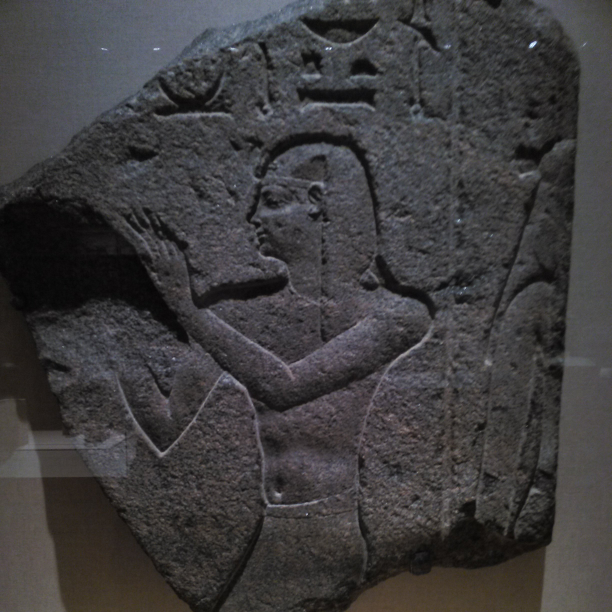
This man's pose suggests that he praising or worshipping, probably directed towards a god. This piece is also interesting because it depicts a Greek king of Egypt wearing Egyptian clothing: the traditional nemes-headdress of the pharaoh.
